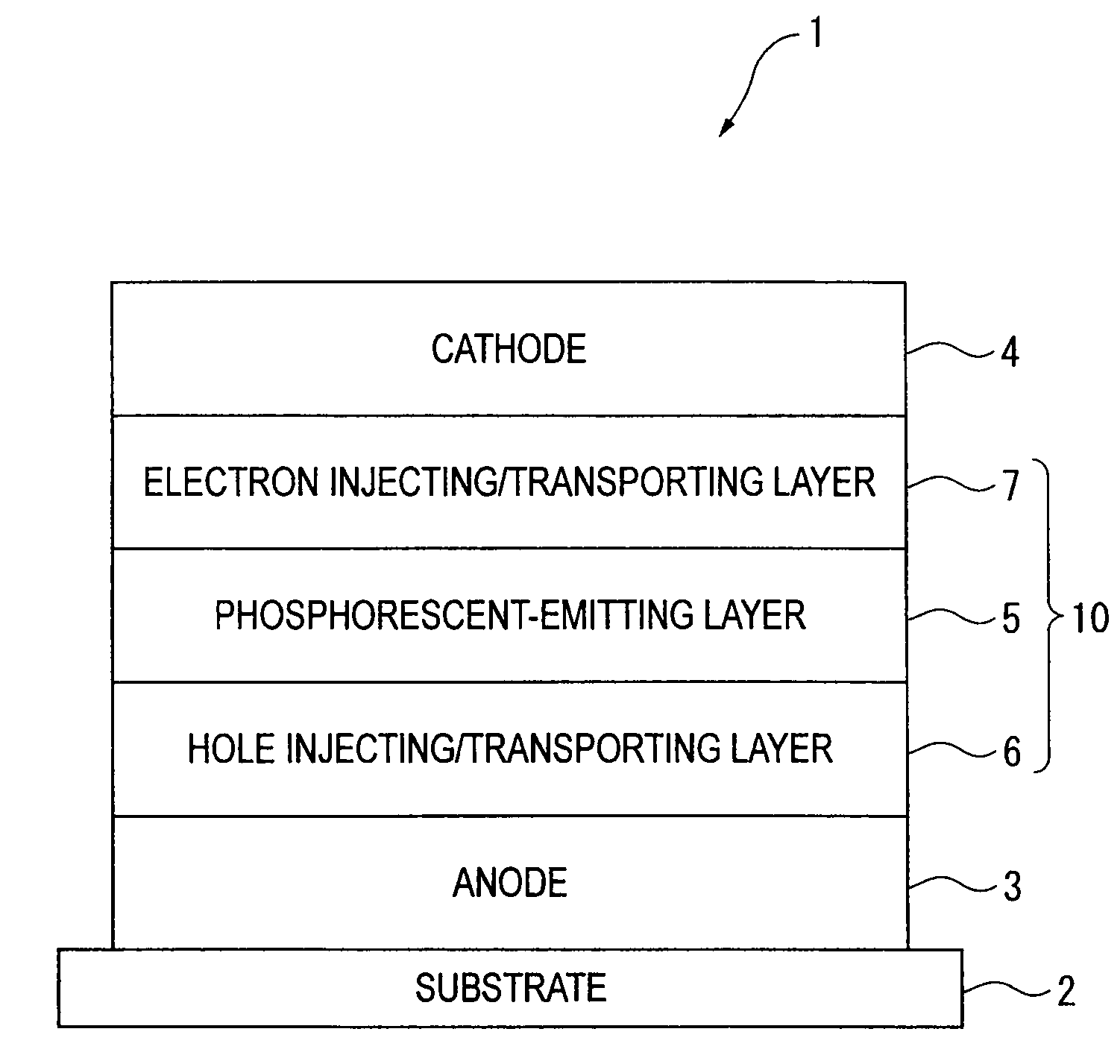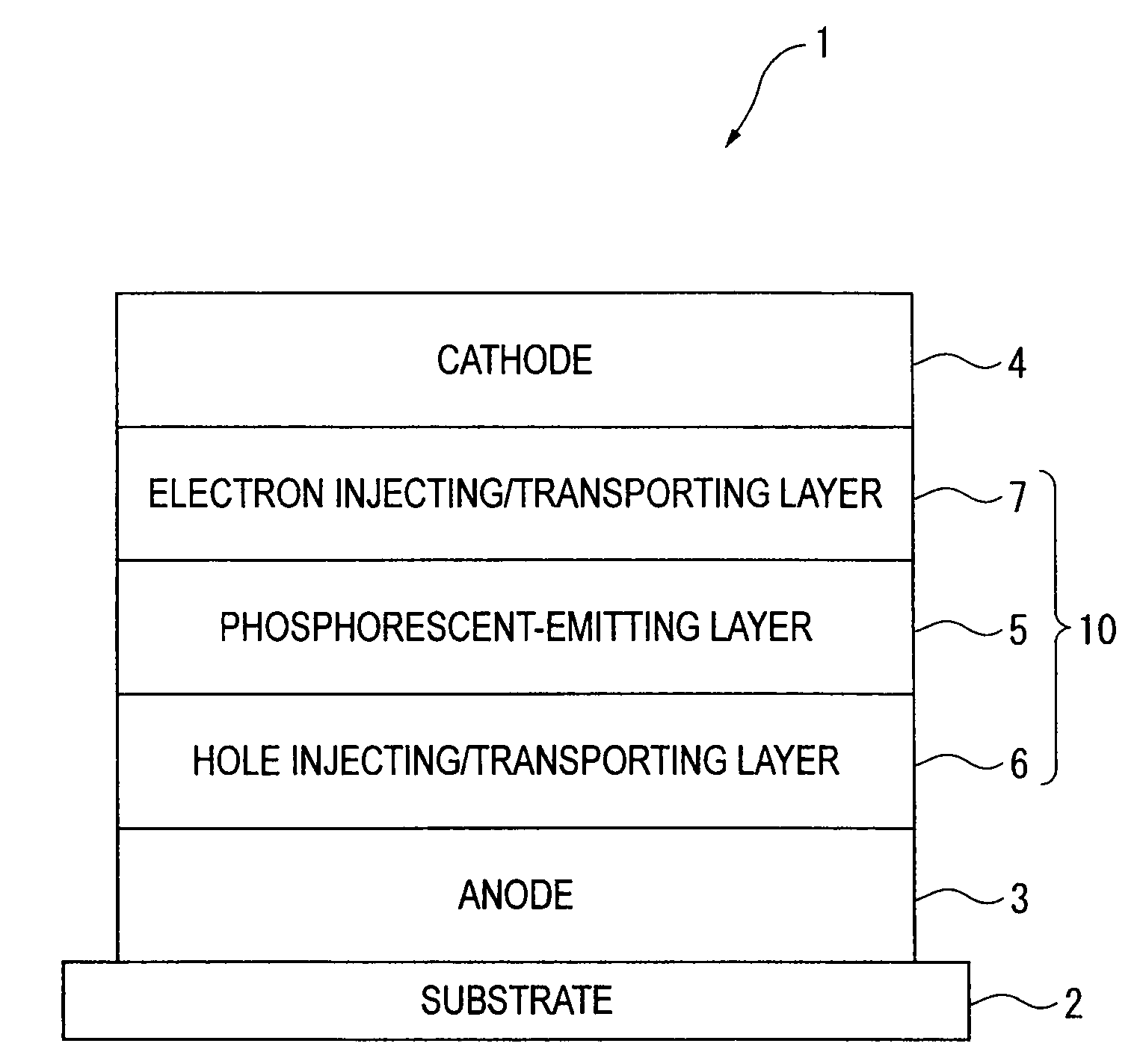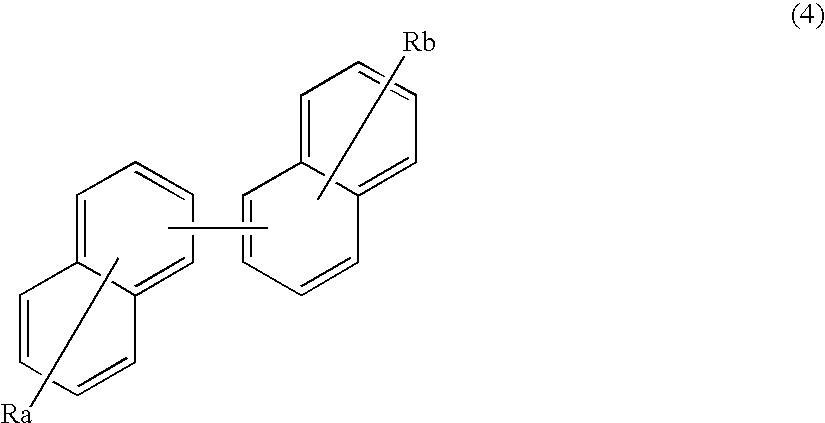Organic electroluminescence device and material for organic electroluminescence device
a technology of electroluminescence device and organic material, which is applied in the direction of discharge tube/lamp details, luminescnet screen, discharge tube/lamp material, etc., can solve the problems of inability to capture energy, short life of the device, and inability to meet the practical use of certain cases, etc., to achieve high efficiency, long life, and long life
- Summary
- Abstract
- Description
- Claims
- Application Information
AI Technical Summary
Benefits of technology
Problems solved by technology
Method used
Image
Examples
synthesis example
[0303]Next, a manufacturing method of the host material according to the present invention will be described with reference to synthesis example(s). However, the present invention is not limited to such synthesis examples.
synthesis example 1
Synthesis of Compound A15
[0304]
Under an argon gas atmosphere, 8.0 g (21 mmol) of 2-bromo-6-(9-phenanthryl)naphthalene, 6.2 g (21 mmol) of 3-(9-phenanthryl) phenylboronic acid, 490 mg (0.42 mmol) of tetrakis(triphenylphosphine)palladium(0), 150 mL of toluene, 50 mL of dimethoxyethane and 30 mL of 2M sodium carbonate solution were mixed, and stirred for 12 hours at 90 degrees C. Subsequently, the reaction mixture was cooled down to room temperature, added with water and stirred for one hour at room temperature. Then, the reaction mixture was extracted by toluene. After liquid separation, organic phase thereof was cleansed with saturated saline solution and dried with anhydrous sodium sulfate. The solvent was distilled away under reduced pressure, and the residue was refined by silica-gel column chromatography and recrystallized by toluene, such that 6.4 g of the compound A15 was obtained at an yield of 55%.
[0305]Mass-spectrum analysis consequently showed that m / e was equal to 556 whil...
synthesis example 2
Synthesis of Compound A16
[0306]
[0307]Under an argon gas atmosphere, 10.0 g (30 mmol) of 2-bromo-6-(2-naphthyl)naphthalene, 8.9 g (30 mmol) of 3-(9-phenanthryl)phenylboronic acid, 700 mg (0.60 mmol) of tetrakis(triphenylphosphine)palladium(0), 200 mL of toluene, 65 mL of dimethoxyethane and 42 mL of 2M sodium carbonate solution were mixed, and stirred for 12 hours at 90 degrees C. Subsequently, the reaction mixture was cooled down to room temperature, added with water and stirred for one hour at room temperature. Then, the reaction mixture was extracted by toluene. After liquid separation, organic phase thereof was cleansed with saturated saline solution and dried with anhydrous sodium sulfate. The solvent was distilled away under reduced pressure, and the residue was refined by silica-gel column chromatography and recrystallized by toluene, such that 7.8 g of the compound A16 was obtained at an yield of 51%.
[0308]Mass-spectrum analysis consequently showed that m / e was equal to 506 w...
PUM
 Login to View More
Login to View More Abstract
Description
Claims
Application Information
 Login to View More
Login to View More - R&D
- Intellectual Property
- Life Sciences
- Materials
- Tech Scout
- Unparalleled Data Quality
- Higher Quality Content
- 60% Fewer Hallucinations
Browse by: Latest US Patents, China's latest patents, Technical Efficacy Thesaurus, Application Domain, Technology Topic, Popular Technical Reports.
© 2025 PatSnap. All rights reserved.Legal|Privacy policy|Modern Slavery Act Transparency Statement|Sitemap|About US| Contact US: help@patsnap.com



